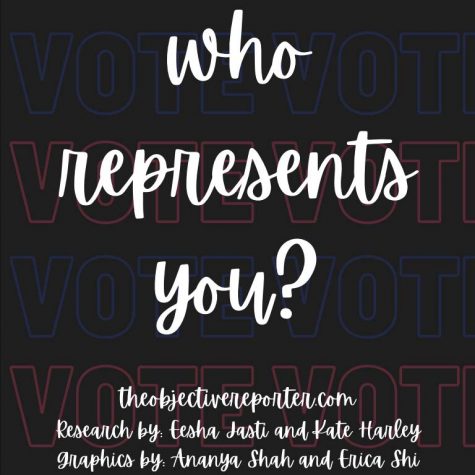Shooting at Stoneman Douglas Reignites Gun Debate
March 15, 2018
At 10:00 AM on February 14th, Nicholas Cruz barged into his former school, the Marjory Stoneman Douglas High School, in Parkland, Florida. Armed with a semi-automatic AR-15 rifle and smoke grenades, Mr. Cruz set off the fire alarm causing students to exit their classrooms. He then open fired inside the Florida high school, killing seventeen people in one of the deadliest school shootings in American history. Authorities have charged Cruz with 17 counts of premeditated murder.
Cruz is a former student who had been expelled from Marjory Stoneman Douglas for disciplinary reasons. Known for his erratic behavior, students speaking anonymously to CBS Miami described him as crazy with an affinity for violence. Last fall, Cruz himself commented on YouTube, “I’m going to be a professional school shooter.” The F.B.I. confirmed that it had received information about Mr. Cruz’s comment, but they could not determine the true identity or location of the person who posted the comment.
The United States suffers from an epidemic of gun-related deaths. According to Adam Lankford, a professor at the University of Alabama, after adjusting for population, only Yemen has a higher rate of mass shootings among countries with more than 10 million people. This may be explained by the astronomical number of guns in circulation. His study reveals that Americans make up about 4.4 percent of the global population, but own 42 percent of the world’s guns.
The AR-15 rifle used by Mr. Cruz was purchased legally at Sunrise Tactical Supply, a gun shop in Coral Springs, Florida. Dubbed the most popular rifle in America by the N.R.A., the AR-15 (which was originally designed for troops to kill enemy fighters) has become the weapon of choice for mass killers.
Congress initially banned AR-15s and other semiautomatic rifles from 1994 to 2004. Since that law expired 14 years ago, in most states, it is easier to buy an AR-15-style gun than a handgun. According to Adam Skaggs, chief counsel of the Giffords Law Center to Prevent Gun Violence, “These guns are much more deadly than traditional bolt-action rifles or traditional shotguns, but they are regulated the same way.”
A fundamental question revolves around whether a person’s rights under the Second Amendment can be maintained if at the same time, certain guns are restricted. Legal scholar Cass Sunstein argues that the Second Amendment should not stand in the way of common-sense gun control. “Plenty of people support the second amendment, but recognize the difference between a musket or an AK-15,” claims Sunstein.
In response to the Parkland incident, students nationwide have staged walkouts protesting gun violence. Activists point out that the majority of guns used in 18 recent mass shootings were purchased legally with background checks, and many demand stronger gun legislation. Mr. Cruz passed his federal background check, and the store’s owners said they had no reason to believe he was disturbed or capable of carrying out such an attack.
Cruz suffers from brain development issues and mental illness. President Trump and Florida Governor Rick Scott have identified mental illness as a root cause of gun violence and called for legislation preventing mentally ill people from purchasing guns. Mental illness, however, is not a major cause of gun violence. A 2015 study conducted by the National Center for Biotechnology Information estimated that only 4 percent of American gun deaths could be attributed to mental health issues.
A number of potential solutions have been proposed to contain gun violence. President Trump supports arming school teachers, citing their immediate ability to stop an active shooter. According to a National Center for Education Statistics survey, there are about 3.5 million teachers in public and private schools in the United States. Mr. Trump has suggested arming 20%, would mean roughly 700,000 teachers carrying guns – a force equivalent to half the U.S. military. N.R.A. Chief Executive Wayne LaPierre agrees with Mr. Trump. He argues, “The only way to stop a bad guy with a gun is a good guy with a gun.”
Other experts have challenged with President Trump’s proposal, claiming teachers are a minor deterrent to an active shooter. Michael Hiltzik, writing for the Los Angeles Times, observes, “The issue really is the mind-set that goes with law enforcement. And law enforcement officers with hundreds of hours of training get scrutinized for their encounters on the streets.” With hundreds of thousands of guns in educational institutions, accidental discharges could occur, and guns could potentially fall into the hands of teachers and students who are unfit to operate such weaponry.
According to FBI analysis of shooters between 2000 and 2013, “Law enforcement suffered casualties in 21 (46.7%) of the 45 incidents where they engaged the shooter to end the threat.” If highly trained professional are often wounded or killed in incidents, teachers with limited training may fare worse.
An crucial area of focus is how to handle an armed gunman on school premises. The Department of Homeland Security (DHS) recently published an active shooter response guide that recommends evacuation as a first step. If possible, students should exit the hallways, find a place to hide, and lock the door. Only as a last resort should students attempt to disrupt an active shooter. Ladue Police Chief Ken Andreski adds, “If confronted one on one by an active shooter and a life is in danger, do whatever you can to protect that life. This may include acting aggressively or throwing improvised weapons.” In general, law enforcement has settled on a simple guideline: “run, hide, fight.”
The DHS further recommends training staff for a shooter situation by devising an emergency action plan, including a preferred method for reporting emergencies and an escape procedure. Unfortunately, mass shootings have become common enough that many schools regularly conduct active shooter drills.
Mr. Andreski believes that fostering safety is achieved by investing in infrastructure that limits a shooter’s ability to inflict damage. He is a proponent of target hardening, which includes the installation of devices such as gates, door buzzers, security cameras, and hiring school resource officers to boost security. “Access is crucial – keeping a school contained is a priority,” asserts Andreski. “In open campuses, that is more difficult to accomplish.”
Every solution to mass shootings inevitably involves a tradeoff, whether that be in regard to school atmosphere, budget, or gun freedom. Regardless, it is recognized across the board that we as a country must protect our students. As David Hogg, a 17-year-old survivor of the Marjory Stoneman Douglas shooting told CNN; “We are children. You guys are the adults. Work together, come over your politics, and get something done.”







